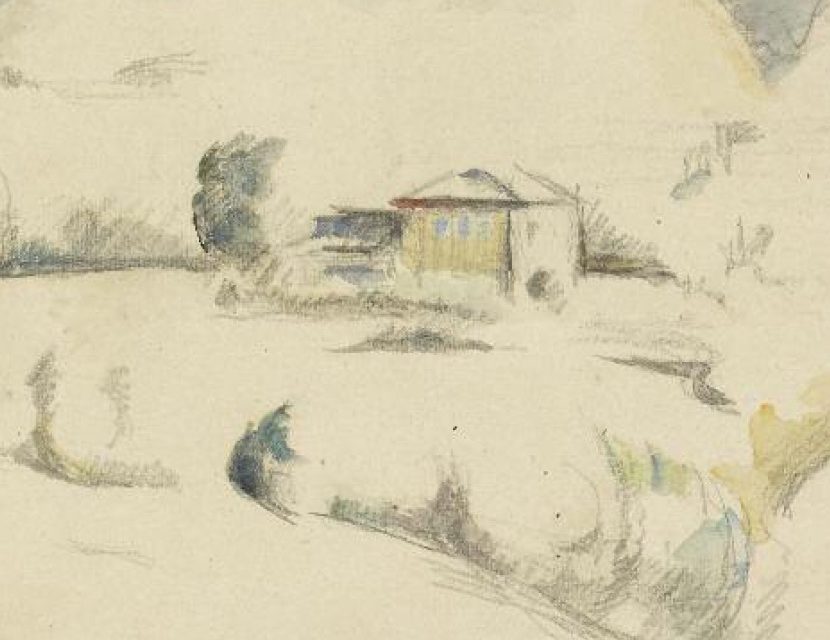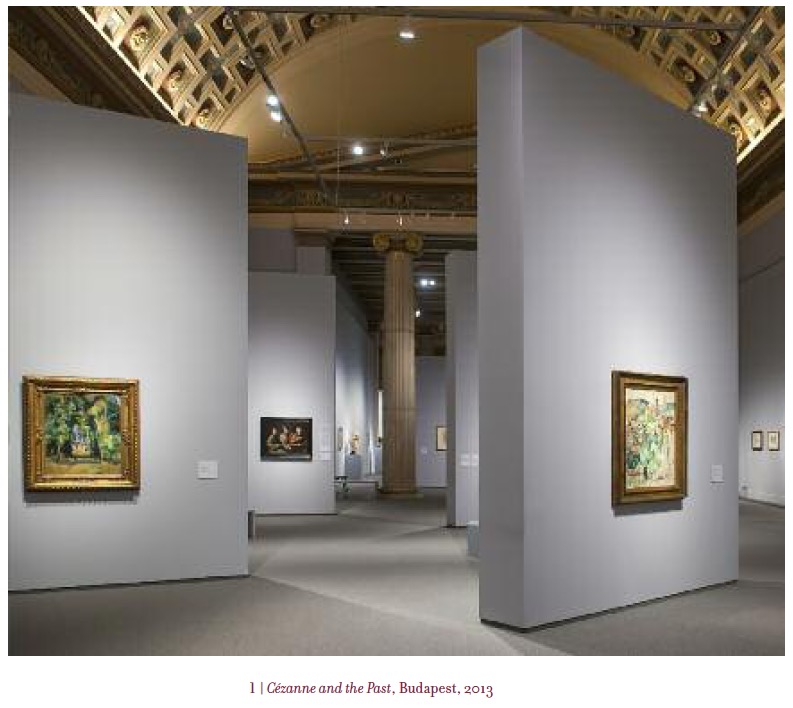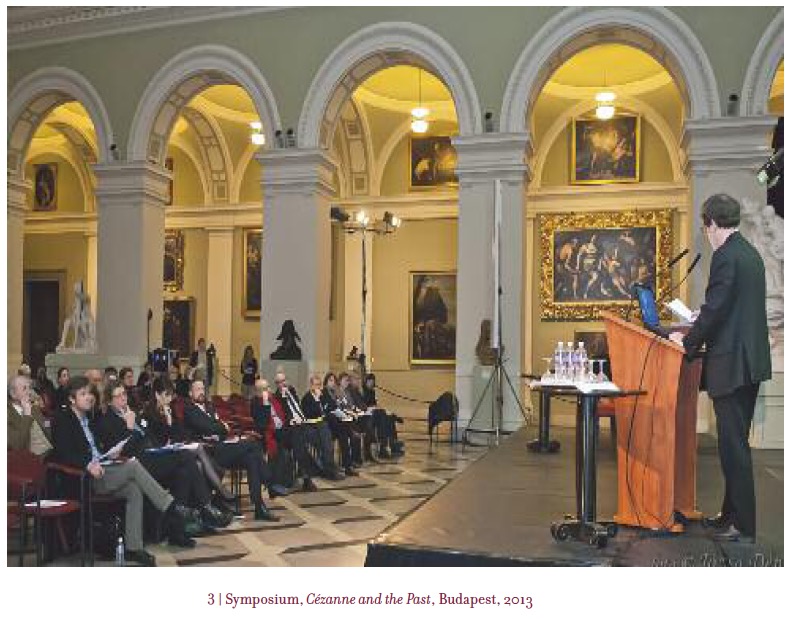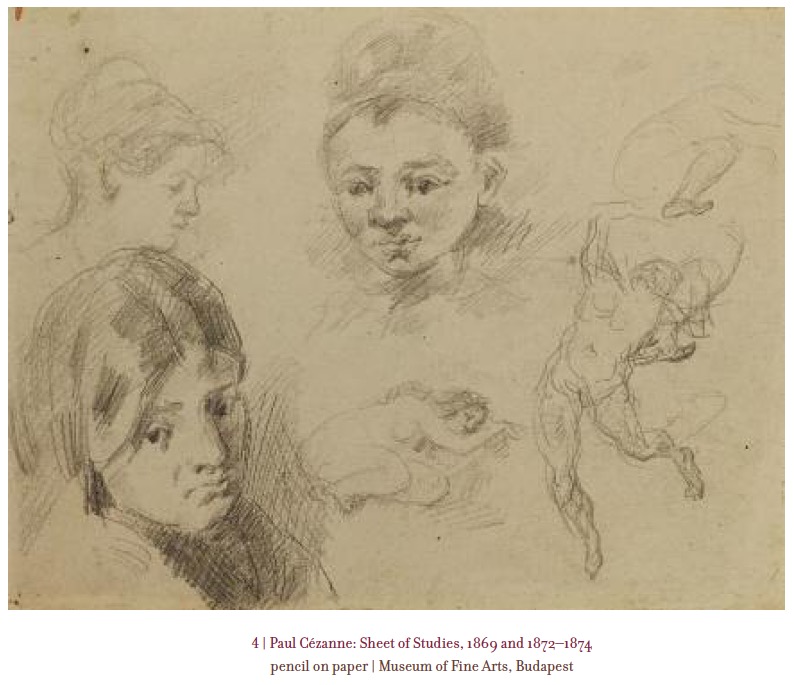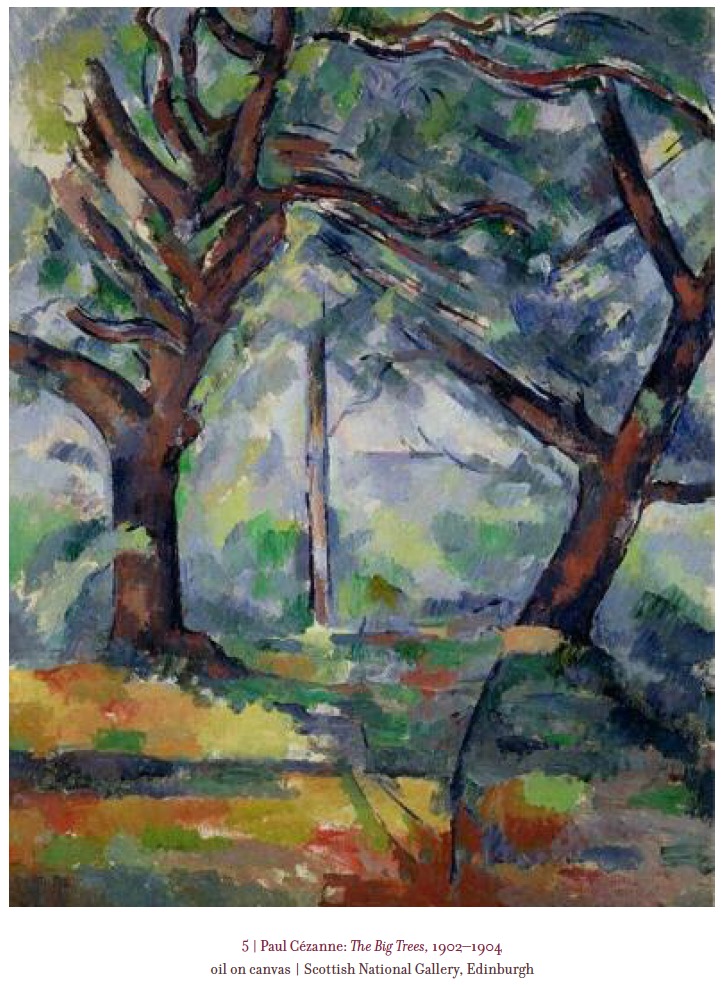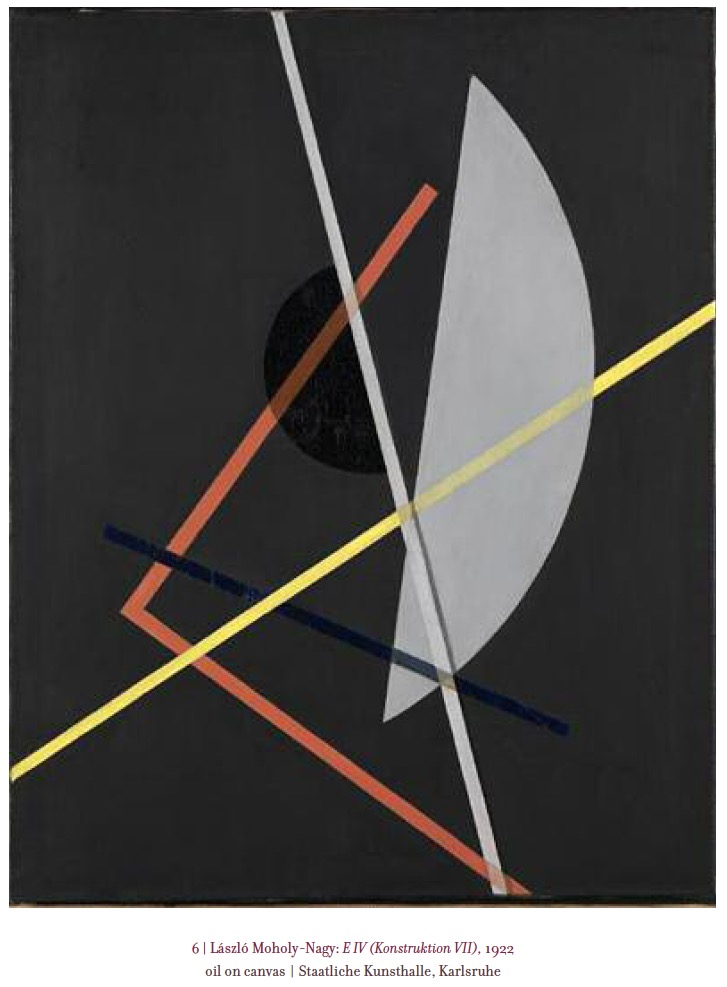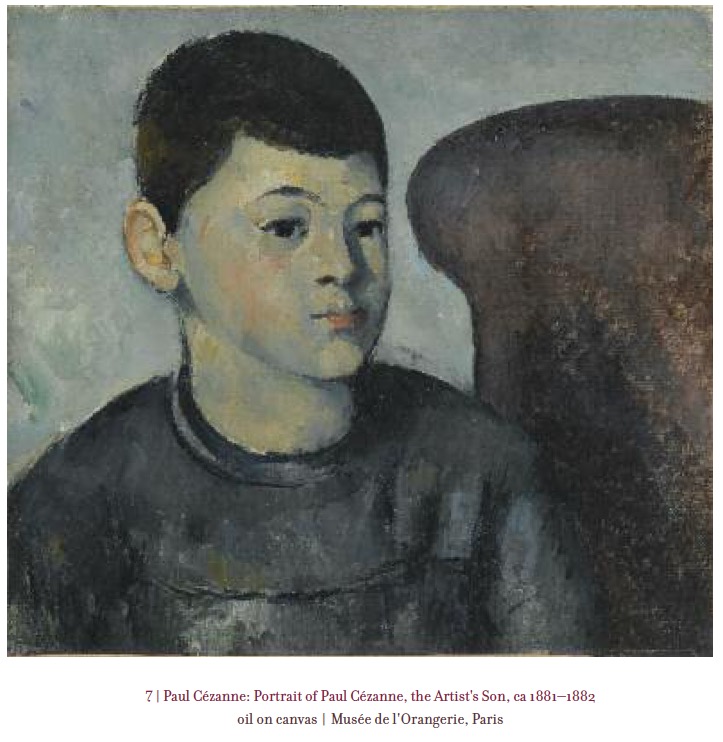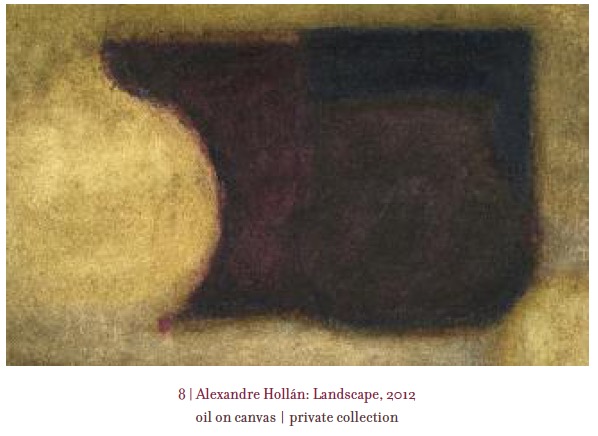A la suite de la grande exposition Cezanne and the Past – Tradition and Creativity qui s’est tenue en 2012-2003 au Museum of Fine Art de Budapest vient de paraître un très intéressant volume contenant les actes du symposium international qui s’en est suivi, et qui constitue un utile complément au catalogue de l’exposition.
Références de l’ouvrage : Cezanne and the Past – Tradition and Creativity, edited by Judit Geskó and Anna Zsófia Kovács, Museum of fine Arts, Budapest, 2017.
Pour rendre compte de la richesse de cet ouvrage, on en trouvera ci-dessous la table des matières ainsi que la préface écrite par Judit Geskó.
CONTENTS
Judit Geskô | Cézanne: Past / Présent / Future | 6
Faya Causey | Cézanne and Antiquity | 26
Mary Tompkins Lewis | Flayed Figures and Plaster Casts: Cézanne’s Ecorchés, their Origins and Progeny | 40
Andrâs Rényi | The Enchantment of Proximity
Notes on Cézanne’s watercolour after Caravaggio’s Entombment
and on the painter’s différent « systems of équivalences » I 62
Richard Shiff | Mimetic Cézanne Imitation and Copying | 84
Jean-Claude Lebensztejn | Cézanne copiste et le Nu aux poires I 102
Matthew Simms | Cézanne, Drawing, and the Past 1112
André Dombrowski | Cézanne and Wagner: The Overture to « Tannhàuser » | 132
Denis Coutagne | Courbet/Cézanne: la vérité en peinture | 148
Frequently Cited Literature I 175
List of Illustrations | 187
Biographies | 195
Index of Names | 198
Abbreviations I 204
(INTRODUCTION)
TO THE UNFORGETTABLE MEMORY
OF ANNE D’HARNONCOURT AND PHILIP CONISBEE
JudIt Geskó
Cézanne: Past / Present / Future[i]
“Only abstraction exists, realism has no meaning, and Leonardo is just as abstract as Picasso. Only in this way can beauty be revealed. And good luck to it ! ”[ii] (Péter Esterházy, 2016)
Cézanne and the Past
At the start of the introductory essay in the catalogue for the Budapest exhibition entitled Cézanne and the Past: Tradition and Creativity, we included the motto: “In the nineteenth century no one would have imagined that it would be followed by the twentieth.” The motto was intended to convey the idea that the research we had undertaken into Paul Cézanne’s art in preparation for the exhibition (figs. 1–2), held at the Museum of Fine Arts, Budapest in 2012–2013, and its accompanying catalogue was in no sense over, and would continue into the future[iii]. The exhibition was followed in 2013 by an international symposium, and in autumn 2020 the museum is hosting a new exhibition with the title Cézanne and Non-Arcadian Abstraction.
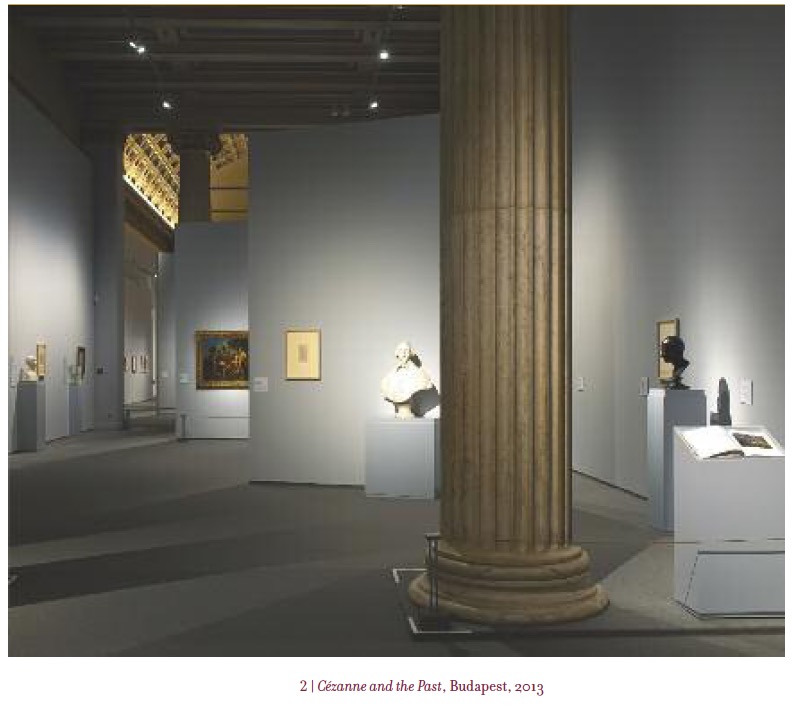 The first exhibition in Hungary dedicated to Cézanne presented around a hundred of the artist’s works, including many pieces that he based on close study of works by Old Masters. Many works by Old Masters were placed alongside Cézanne’s oils, watercolours and drawings, in the western wing of Budapest’s most important art museum, built in a historicist style in 1900–1906. During the process of seeking similarities and discovering differences, we conducted a specific and close-up examination of where the influences of the Old Masters ended and Cézanne’s autonomy began. These comparisons served as guidelines by which to interpret the works in the French artist’s early, mature and late periods. In other words, while we accepted the “classical” nature of Cézanne, as expressed even by his own contemporaries, we also accepted that he was a modern artist, very much a part of his own time, and proceeded with the view that he ought to be studied as such. “Classicism” in Cézanne’s case does not imply that he reverted to tradition; it was a logical expression of his senses, inspired by the systematic – or, as it were, traditional – solutions employed by the Old Masters. Cézanne followed several methods in examining these systematic solutions: he executed direct copies, he borrowed motifs, he carried out stylistic explorations of particular works, or analysed their compositions. These were the tools he used to build up his own unified style, in perfect harmony with his own integral system.
The first exhibition in Hungary dedicated to Cézanne presented around a hundred of the artist’s works, including many pieces that he based on close study of works by Old Masters. Many works by Old Masters were placed alongside Cézanne’s oils, watercolours and drawings, in the western wing of Budapest’s most important art museum, built in a historicist style in 1900–1906. During the process of seeking similarities and discovering differences, we conducted a specific and close-up examination of where the influences of the Old Masters ended and Cézanne’s autonomy began. These comparisons served as guidelines by which to interpret the works in the French artist’s early, mature and late periods. In other words, while we accepted the “classical” nature of Cézanne, as expressed even by his own contemporaries, we also accepted that he was a modern artist, very much a part of his own time, and proceeded with the view that he ought to be studied as such. “Classicism” in Cézanne’s case does not imply that he reverted to tradition; it was a logical expression of his senses, inspired by the systematic – or, as it were, traditional – solutions employed by the Old Masters. Cézanne followed several methods in examining these systematic solutions: he executed direct copies, he borrowed motifs, he carried out stylistic explorations of particular works, or analysed their compositions. These were the tools he used to build up his own unified style, in perfect harmony with his own integral system.
The exhibition Cézanne and the Past can be regarded as the “pendant piece » to Cézanne and Beyond[iv], held in Philadelphia in 2009. In 1995–1996, the American museum, with its collection of fifteen paintings by Cézanne, had organised, in collaboration with the Grand Palais in Paris, what was at the time the most comprehensive and most successful Cézanne exhibition ever. Thirteen years later, the aim was to show the varied and extensive influence that Cézanne’s oeuvre had exerted upon artists across Europe and America. Cézanne and the Past featured the key players from the early twentieth-century art scene in Paris (Pablo Picasso, Henri Matisse), artists from the Russian avant-garde, De Stijl in Holland and futurism in Italy, and works by Giorgio Morandi, as well as contemporary American and European artists who are consistent in their enquiries into the mysteries of Cézanne’s works, just as the Master of Aix once enquired into those aspects of Old Master paintings that posed challenges and presented him with artistic solutions. This exhibition was of immense help in finalising the concept for and planning the structure of the second Cézanne exhibition in Budapest, which is scheduled to open in October 2020.
Sequences and Originality
“… all art not only searches for its own precursors, but also creates them; that is, it modifies our conception of arts that are distant in time or in space, looks at it in a different way, and enriches it with new aspects.” (János György Szilágyi)5[v]
The countless formal sequences so evident in Cézanne’s oeuvre are most fittingly exemplified by his compositions of Bathers. The thematic exhibition held in Basel in 1989 in many ways provided the template for this. In the catalogue, the study by Gottfried Boehm[vi] presented the ways in which the artist progressed, via drawings, watercolours and oil paintings, from the motif itself to the creation of the image.
At the Budapest exhibition, individual “sequences” could be distinguished according to the creative problem they dealt with. As Cézanne wrote in 1905, the year of his death, in a letter to Roger Marx, the editor of the Gazette des Beaux-Arts: “My age and my health will never allow me to realize the artistic dream I have pursued all my life. But I shall always be grateful to the audience of intelligent art lovers who have sensed what I was trying to do to renew my art, in spite of my halting attempts. In my opinion, one does not replace the past, one only adds a new link.”[vii]
George Kubler’s 1962 work, The Shape of Time[viii], which takes Henri Focillon’s morphological studies as one of its starting points, proved enormously influential on subsequent art history writing because it questioned the line of thought in twentieth-century art theory that contended that art was a symbolic language. the professor of pre-Columbian art criticised every movement which concentrated on the meaning of artworks, and he defined his own task as systematising the formal relations of art[ix] : “Every important work of art can be regarded both as a historical event and as a hard-won solution to some problem. It is irrelevant now whether the event was original or conventional, accidental or willed, awkward or skillful. The important clue is that any solution points to the existence of some problem to which there have been other solutions, and that other solutions to this same problem will most likely be invented to follow the one now in view. As the solutions accumulate the problem alters. The chain of solutions nevertheless discloses the problem.”
Kubler distinguishes between guided and self-determining sequences. These terms, which can also be used as substitutes for tradition and creativity (the latter meaning rebellion/revolutionary change), are an attempt to systematise the conventional way of examining an artist’s oeuvre by isolating and evaluating all the aspects that are dissimilar from the works of others. In the realm of aesthetics, the concepts of repetition, copying and imitation are paired with a plethora of pejorative epithets. The exhibition Cézanne and the Past also provided a framework within which to seek an answer to the question of “how to conceive of a kind of art history writing that is built on the theory of formal sequences, where the problem is approached not from the viewpoint of a philosopher, but from that of a ‘practising’ art historian”[xi]. In the quoted book review, the classical philologist and etruscologist János György Szilágyi expressed his hope that it would be worthwhile attempting to write the history of art as the history of formal sequences[xii].
The material for the Cézanne exhibitions in Budapest and Philadelphia also proved suitable for examining Kubler’s systematic concept of time. Kubler interprets “things” as different solutions to particular questions. Things that answer identical or similar questions are sorted, in his way of thinking, into “form-classes”. Those which are connected by shared tradition or by mutual influence constitute historical “formal sequences”. He makes a distinction between “prime objects” and copies or reinterpretations, collectively known as “replications”, without relegating to the background such auxiliary disciplines as biographical source research, the history of forms, style criticism or iconology. The determination of formal objectives and their links to material and technique comprise the basis of a methodology which, when supplemented with the history of style, the psychology of perception or the theory of intuition, opens up new opportunities for research.
Cézanne and the Present: The Symposium in Budapest
To coincide with the exhibition entitled Cézanne and the Past: Tradition and Creativity, the Museum of Fine Arts, Budapest organised a symposium (fig. 3) for experts involved in the universal research into Cézanne[xiii],which summarised the conclusions of the work carried out between 2006 and 2012 and brought the Budapest exhibition into the international scientific dialogue on the artist.
As verified by the authors of the studies in the catalogue, by the prestigious speakers at the symposium, by the presentations delivered by American, French and Hungarian researchers, and by the papers that were written subsequently, the museum’s efforts were directed towards enriching the spirit and intellect of the general public in Budapest by presenting them with an exhibition that took an innovative approach. The interest shown by our visitors is more complex than it used to be when our lives, here in Hungary, were kept apart from those in Western Europe and North America by strict borders. People have grown more sophisticated, more critical and sceptical, and are more inquisitive about both the meaning and the usefulness of our inherited culture. It is not enough, therefore, for us merely to present them with a slideshow of artworks that demonstrably belong to this concept of cultural heritage; we must also pose questions, and simultaneously attempt to answer them to the best of our knowledge[xiv].
When Richard Shiff, Yale student during Professor Kubler’s time, saw the Cézanne and the Past exhibition in 2013, he immediately understood the shape of the exhibition, with its guided and self-determining sequences. He was a moderator at the symposium, but he later asked me if he could contribute an essay for the collected papers. His subject? “Mimetic Cézanne”, the “appearing to appear”, which is also a question of fundamental importance in contemporary Hungarian literature[xv].
Partly in response to a question posed by Joseph Rishel, the icon of Cézanne research, in the opening minutes of the round-table discussion that followed the symposium, I suggested to the participants that instead of using the word “copy”, we should use the term “interpretation”, since the Master of Aix always strove to interpret the forms used by the Old Masters. With this to help him, Cézanne looked for answers to his own problems with painting, such as how to shape an object, how to place two colours side by side, how to convey different layers of space, and how to structure a composition.
The first comprehensive articles and detailed analytical studies that examined the original pictorial sources for certain works by Cézanne appeared in the early 1960s. Previous writers, such as Julius Meier-Graefe, Leó Popper, Lajos Fülep, Charles de Tolnay, Roger Fry, Ernő (Ernst) Kállai and Fritz Novotny, had of course mentioned such works as precedents, but none of these writers had explored the works thoroughly from a compositional or structural point of view. This task was undertaken in the 1960s and 1970s by Gertrude Berthold, Theodore Reff and Richard Shiff. During their research, they established that the anecdotal approach had little or no part to play in investigating the life’s work of Cézanne. This was an important realisation, for they soon discovered, almost everywhere they turned, a wealth of hitherto unrecognised “forebears” to Cézanne’s works.
In our present volume, the study by Jean-Claude Lebensztejn analyses Cézanne’s compositions of Leda as “un collage insolite et riche d’avenir”. Lebensztejn’s research into Cézanne has clearly followed the direction laid out for him by the Cézannesque experienced phenomenon. Cézanne, before labouring all the way through the fourth decade of his activity, gave profound consideration to the full extent of his life. In this sense it is likely that Lebensztejn tacitly rejects the twentieth century’s psychological interpretations which led to Cézanne research (and, likewise, Van Gogh research) taking a misguided detour that lasted so many decades. With his analysis of Leda, Lebensztejn fundamentally abandons the drama of split humanity (see L’Événement), and leads us, through his collage-like presentation of the union between woman and deity, towards hopelessness. Readers of this volume are led back out of this hopelessness by Richard Shiff’s study on mimesis. The path to apostolic work taken by the genius is presented in the lectures of Lebensztejn and Shiff. The development of personality and talent leads the artist (Cézanne) towards the kind of everyday life whose everyday torments provide the sole assurance of him having followers right up until the present day. Credible existence is explained by constant restlessness and the compulsion to work. His sensual aptitude and his minor sensations can only come into being when given form through daily suffering and longing. Until the final days of his life, in the midst of anxieties, Cézanne never shirked responsibility. He was alone in choosing his destiny and his work.
Mary Tompkins Lewis, in her paper, examines the question of scientific objectivity and artistic subjectivity. Anatomical questions are treated as a humanistic discussion. She conducts a thoroughgoing analysis of the anatomical work first published by Andreas Vesalius in 1543, reprinted in France in 1810 by the École des Beaux-Arts, a copy of which was owned by Cézanne. She explores issues surrounding the écorché from Antonio Pollaiuolo through Luca Signorelli to Arshile Gorky.
These are not simply human figures, for they reflect on general problems. The figures are timeless, yet the way in which they are formed was extremely provocative and utterly modern in the late nineteenth and early twentieth centuries, for Cézanne deviated substantially from the accepted ideal of beauty, which is what captivated the great masters of the twentieth century so intensely. When we consider the way in which Picasso or the artists of the Russian avant-garde reflected on existential questions and on the historical situations that people in the twentieth century had to endure, there is always a perfectly logical line leading all the way back to Cézanne. When the Museum of Fine Arts, Budapest held its Van Gogh exhibition in 2006–2007, we examined why and how the art of Michelangelo had become a model for the great post-impressionist master, why Van Gogh took such an interest in the question of “distortion”, and why Michelangelo was still forbidden in treatises on drawing in nineteenth- century France[xvi]. Why did people say that Michelangelo did not know how to draw? Why did Raphael and Leonardo have to be copied instead? And why did Cézanne and Van Gogh reflect so deeply on Michelangelo (fig. 4, CH 271)?
Because a world on the brink of collapse – whether in the years before World War I, or during it, or in the early 1920s, until a little elusive hope was provided by neo-classicism[xvii], or until a different kind of hope, though just as elusive, was given by the new Objectivity – may have functioned as the starting point for Picasso or for the great Russian avant-garde masters. Because the generalised figures and the entire Cézannesque monde de formes provided Cézanne’s successors with incredible interpretative possibilities, even in respect to what Søren Kierkegaard wrote about in Either/Or, the fragments of life that he published in Copenhagen in 1843. Artists dress in false guises, and within the complex system of incognitos there are, in the final analysis, three distinct forms of behaviour, three possible paths of life to choose from: the aesthetic, the ethical, or the religious[xviii]. By following a new set of criteria in examining the oeuvre of Cézanne – who was born in 1839, four years before the publication of Either/Or – the forthcoming exhibition in 2020 will attempt to find out which aspect of the Kierkegaardian approach is represented by the abstraction formed in the 1910s, 1920s and 1930s taking the non-Arcadian perspective (fauves).
André Dombrowski attempted to include Cézanne in the magic circle that Thomas Mann once proposed for Charles Baudelaire and Richard Wagner, even bringing in Cézanne’s favourite composer, Carl Maria von Weber. According to Thomas Mann, “For Baudelaire the encounter with Wagner was the discovery of music tout court”[xix]. “… And now this rapturous enthusiasm, which fired him with the ambition of making music with language, of emulating Wagner with language alone – an undertaking that had far-reaching consequences for French poetry as a whole.”[xx] Everything that happens with Cézanne is the painting equivalent of poetic transubstantiation. Cézanne was unwilling and unable to accept the nineteenth-century bourgeois world as the peak of historical development. It was not that he could not see the prospects that existed beyond bourgeois society, but because he regarded bourgeois society as a structure in which it was impossible for individuals to achieve their own unique potential. As the young Georg Lukács suggested, it may offer a way back from alienation to artistic creativity[xxi].
The dark colours, primitive forms and inexpert compositions of Cézanne’s early paintings are depictions of the bourgeois individual, synonymous with portrayals of the unhappy individual[xxii]. To borrow Kierkegaard’s words: “The unhappy person is one who has his ideal, the content of his life, the fullness of his consciousness, the essence of his being, in some manner outside of himself.”[xxiii] From the 1870s onwards, Cézanne gradually withdrew the content of his own life within himself.
Up to and including Shiff’s discourse on mimesis, Faya Causey’s exploration of copies of works of antiquity, and Matthew simms’s recommendation on the interpretation of drawings by Old Masters, several presentations at the symposium, as well as this introduction (and of course the exhibition in 2020) form part of the growing body of evidence that the classical distinction between copying and imitation is now inoperative.
Cézanne’s works were almost as incomprehensible to the average art lover of the early twentieth century as the cubism of George Braque and Pablo Picasso, as only one step needs to be taken to bridge the gap between the paintings Cézanne produced in his final decades and the birth of cubism. And we should bear in mind that in 2007, when we presented a show of works by Braque and Picasso from the 1910s, many visitors to the museum had their work cut out for them. We did ponder whether it was the right decision to display such a significant private collection as the Swiss Rupf Collection[xxiv] before the Cézanne exhibition (for it interrupted somewhat the broad arc that we intended to draw through Monet, Van Gogh and Cézanne), but we were forced to do so, because we knew that on the same day as the Cézanne exhibition opened, we would also be opening our new permanent display of twentieth-century art. And it was certainly worthwhile provoking the general public a little.
The symposium also sought a way of explaining the mysterious circumstance by which one of the most important oeuvres in the universal history of art – that of Cézanne, who was regarded by his impressionist and post-impressionist fellow artists as among the very greatest, and who was furthermore, almost immediately after his death, generally regarded by art historians as simultaneously the acme of everything that had happened before him, and a beginning and source of what would happen in the twentieth century – is still less unconditionally appreciated by the non-professional art-loving public than the life’s works of other impressionists and post-impressionists. The answer probably lies in the very reasons why Cézanne is regarded as the progenitor of twentieth century art, namely the complexity of his art and his manner of painting, more specifically his compositional order, his study of perspective and his brushwork; in sum, his strict, avant-garde, conceptual approach, interwoven with the lessons he learnt from the Old Masters – Cézanne himself made no distinction between the two poles. He was equally drawn to cool classicism and to a whole range of impulsive, baroque-like, expressive styles. This is what makes Cézanne’s oeuvre so exhilarating and difficult to fathom, for unlike, for instance, Degas, who is purely “classical”, or Van Gogh, with his expressive colourism, Cézanne blends the two extremes inextricably together, rendering his art as complex as life itself. Back in the day, this prompted a number of philosophers to delve into Cézanne’s oeuvre, resulting in research into the Master of Aix taking a sidetrack that we have emerged from only fairly recently.
Cézanne and the Future
“The compositional harmony that Cézanne sought to achieve in his Bathers, despite its apparent similarity to the issues explored in Golden Age painting, nevertheless does not fit within this concept. Cézanne chose this hermetic subject matter, isolated from daily life and from the world of impressions, for the purpose of his own objective abstraction, and its formal harmony is merely supported by the harmony in the relationship between man and nature.”[xxv] (Éva Körner)
As with Cézanne and the Past: Tradition and Creativity, for the forthcoming exhibition, Cézanne and Non-Arcadian Abstraction, the Museum of Fine Arts, Budapest, following a tradition pursued since its founding, will once again produce a catalogue, in which an attempt will be made to tie together the different movements of research into Cézanne.
The concepts for both Cézanne exhibitions, as well as certain chapters in each catalogue, are firmly rooted in Hungarian art history tradition: the research undertaken by Charles de Tolnay, Frederick Antal, Johannes Wilde and Ernst Kállai, through their work in Vienna, Florence, Princeton, London, Oxford and at the Bauhaus, all connects back to contemporary art history research. Between 1948 and 1989, research in Hungary often faced obstacles when it came to sources kept in European or American archives. The collection of special books at the National Gallery of Art, Washington, the John Rewald Collections at the Department of Image Collections in the same institution[xxvi], and Charles de Tolnay’s estate at the Casa Buonarroti, Florence, are all available today. The first volume of Ernst Kállai’s writings, edited by Éva Forgács[xxvii], and the critical edition of his writings, compiled by Árpád Timár[xxviii], chapters by Júlia Bendl and others that connect the early writings of Georg Lukács with the fine arts, and the pronounced and profound opinions of professors Lajos Fülep and Lajos Németh about impressionism and post-impressionism, all form the basis for the exhibition titled Cézanne and Non-Arcadian Abstraction (figs. 5–6, and 7–8).
Researchers seeking answers to questions concerning the theory of abstraction are fortunate indeed when they are able to find some of these answers among the constructivist and concrete-art paintings, drawings and prints contained in the Vass Collection of Budapest, which is slowly earning a place among the most important private art collections in Europe[xxix]. The exhibition titled Cézanne and Non-Arcadian Abstraction could be the preamble for a future constructivist exhibition which would be based on historiographical and style historical research undertaken by a new generation of scholars. These could be supplemented by the investigations into László Moholy-Nagy conducted by Krisztina Passuth and Oliver Botar, by Márton Orosz’s research into György Kepes, and by the scientific studies of Lajos Kassák being pursued by the Kassák Museum in Budapest.
Another important pillar to this work is provided by the outstanding scientific results produced by members of the Société Paul Cézanne in Aix-en- Provence[xxx]; to mention the source publications of just the last few years, Jean- Claude Lebensztejn’s re-reading of 53 letters by Cézanne[xxxi], Henri Mitterand’s critical edition of the correspondence between Émile Zola and Cézanne[xxxii], and the new digital catalogue raisonné by Walter Feilchenfeldt, David Nash and Jayne Warman[xxxiii], have laid firm philological foundations on which to build future research.
In an essay from the 1870s that was published posthumously as “We Philo – logists”, Friedrich Nietzsche wrote, “Philology as the science of antiquity does not, of course, endure for ever; its elements are not inexhaustible. What cannot be exhausted, however, is the ever-new adaptation of one’s age to antiquity; the comparison of the two. If we make it our task to understand our own age better by means of antiquity, then our task will be an everlasting one.”[xxxiv] This quotation is intended in reference to the message of the two Cézanne exhibitions in Budapest: only the questions have changed, just as today became yesterday, and eventually faded into the past. The exhibition Cézanne and Non- Arcadian Abstraction will examine the points of connection and common ground between the great Master of Aix and the constructive and concrete art movements of Russia, Holland, Germany and Hungary through the problématique of form, composition and colour. This will not be an exhibition on the history of influences. Taking chapter 6 of Michael Baxandall’s study titled “Intentional Visual Interest: Picasso’s Portrait of Kahnweiler” as a starting point, the terms he lists there are used to compare the movements of modernism with the legacy of Cézanne. Baxandall’s “Excursus against influence” can easily be regarded as a manifesto. “‘Influence’ is a curse of art criticism primarily because of its wrong-headed grammatical prejudice about who is the agent and who the patient: it seems to reverse the active/passive relation which the historical actor experiences and the inferential beholder will wish to take into account. If one says that X influenced Y it does seem that one is saying that X did something to Y rather than that Y did something to X. But in the consideration of good pictures and painters the second is always the more lively reality.”[xxxv] Since so much has already been written about the so-called influence of Cézanne, it is necessary to find new approaches and offer new analyses. The signs at the start of the road have been precisely laid out by Michael Baxandall’s analysis. There are several possible approaches to the question he has put forward.
NOTES
[i] Cf. Honoré Daumier: The Past, the Present, and the Future (Le passé – Le Présent – L’Avenir), published in La Caricature, no. 166, 9 January 1834.
[ii] Péter Esterházy, Hasnyálmirigynapló [Pancreas diary] (Budapest: Magvető kiadó, 2016), 110.
[iii] The essays in the catalogue are: Judit Geskó, “‘Builderly’ Painting: the Making of an exhibition”; Richard Shiff, “Sensation, Cézanne”; Inken Freudenberg, “‘And the picture, once left, torments us and pursues us’: Cézanne and Delacroix”; Peter Kropmanns, “A trophy of Conquering Love: Cézanne and Poussin”; Nancy Ireson, “Personalising the Past: Cézanne and the Card Players”; klaus Herding, “A dramatic Interplay in Form and expression: Cézanne and Puget”; Mary Tompkins Lewis, “Cézanne and the Louvre”; Bruno Ely, “Cézanne and the Musée d’Aix”; Anna Zsófia Kovács, “Cézanne’s use of reproductive Prints”; Linda Whiteley, “The reception of Cézanne: Cézanne and the Past”; Caroline Elam, “Modern Vision and the ‘Older Masters’: Roger Fry’s Cézanne”; Ferenc Gosztonyi, “The early reception of Cézanne in Hungary, 1906–10: Fülep and Popper”; Lukas Gloor, “Art History in the Making: the reception of Cézanne between 1920 and 1950”; Péter Molnos, “the Paintings of Paul Cézanne in Hungarian Private Collections”; Judit Geskó, “drawings, Watercolours and Prints by Cézanne in Budapest”.
[iv] Philadelphia, 2009.
[v] János György Szilágyi, Legbölcsebb az Idő: antik vázák hamisítványai (Budapest: Corvina, 1987), 6.
[vi] Gottfried Boehm, “un paradis de peinture. Observations sur les Baigneurs de Cézanne”, in Mary Louise Krumrine, Paul Cézanne. Les Baigneuses, exh. cat. (Basel, 1989).
[vii] Danchev 1913, 390–91, Aix, 23 January 1905.
[viii] George Kubler, The Shape of Time (new Haven: yale university Press, 1962).
[ix] Sándor Radnóti’s indispensable afterword to the Hungarian edition of George Kubler’s The Shape of Time: “Vis a tergo”, in George Kubler, Az idő formája (Budapest, 1992), 195–226.
Kubler, The Shape of Time, 30. In my opinion, Michael Baxandall may have later – in part – started out from this statement by Kubler. Cf. note 36.
[xi] János György Szilágyi, “Harminc év késés” [Thirty-year delay], Holmi 9 (1992): 1361–64.
[xii] Ibid.
[xiii] 28 January 2013.
[xiv] The Cézanne exhibition was part of a series of three exhibitions. In 2003, we presented works by the French impressionists under the title of Monet and Friends. The concept of friendship afforded us an opportunity to bring together paintings of the same landscape details as well as portraits the artists had painted of each other, and to make reference to their connections with the Barbizon masters and the generation of Jean-François Millet and Gustave Courbet. The exhibition was a resounding success, which we attributed largely to the fact that the place occupied by the impressionists in public culture and education mean that their works today represent the sublime idyll. The second stage in the series, in 2006, explored the oeuvre of Vincent van Gogh, with the intention of redressing the balance in the public image of the artist, who – through some emotional biographies and spectacular films – has come to be viewed as a passionate painter on the verge of madness. By presenting the trajectory of his life and his development as a painter, and by giving equal status to each of the three great periods in his career, we reshaped the image of Van Gogh, using a toolset that is only viable in the case of a museum exhibition. These efforts continued with the Cézanne exhibition, which was constructed from similar components: a presentation of his biography and his personal relationships, a reconstruction of his intellectual and formal connections, an emphatic exposition of his early works, and a balanced presence among the exhibited works of Cézanne’s genres: portraits, still lifes, landscapes, and multi-figural scenes. Cf. Judit Geskó ed., Monet et ses amis (Budapest, 2003); Id. ed., Van Gogh in Budapest (Budapest, 2006).
[xv] Here I refer to the works of Péter Nádas or László Krasznahorkai, the 2015 Man Booker Prize winner. Péter Nádas, Parallel Stories, translated by Imre Goldstein (new york: Farrar, straus and Giroux, 2011); László Krasznahorkai, Seiobo There Below, translated by Ottilie Mulzet (London: Tuskar Rock, 2014).
[xvi] Geskó 2006, and earlier: Geskó 1999.
[xvii] Éva Körner, Derkovits Gyula (Budapest, 1968).
[xviii] Ágnes Heller, “A szerencsétlen tudat fenomenológiája” [The phenomenology of unfortunate consciousness], in Søren Kierkegaard, Vagy-vagy [Hungarian translation of Either/Or] (Budapest, 1978), 1017–79.
[xix] Thomas Mann, “The Sorrow and Grandeur of Richard Wagner”, 1933), 108, in Id., Pro and Contra Wagner (Boston and London: Faber and Faber, 1985), translated by Alan Blunden.
[xx] Ibid., 109.
[xxi] György Lukács, Napló – Tagebuch (1910–11); Das Gericht (1913) (Budapest, 1981).
[xxii] Heller 1978, 1020.
[xxiii] Søren Kierkegaard, “The Unhappiest Man”, in Id., Either/Or, translated by david F. Swenson (Princeton, 1944), 181.
[xxiv] Budapest, 2007.
[xxv] Körner 1968, 51.
[xxvi] In november–december 2016, the author of this introduction carried out research at the Center for Advanced Study in the Visual Arts at the National Gallery of Art, Washington dC, as Ailsa Mellon Bruce Visiting Senior Fellow of 2016. Some of the results of the Washington research are published in the institution’s annual report, Center 37:
“After the exhibition Cézanne and the Past. Tradition and Creativity, organized in 2012, the Museum of Fine Arts, Budapest is planning another exhibition focusing on the French artist, entitled Cézanne and Non-Arcadian Abstraction, for the year 2020. Between the two events, thanks to a two-month fellowship granted by the Center for Advanced Study in the Visual Arts, I had the opportunity to pursue my research in the Cézanne-related collections kept at the Research Library, the Gallery Archives Department and the Image Collections of the National Gallery of Art, Washington.
I focused my study and the preparatory works for the following show on the newest research on theories of abstraction, taking into account the fact that several American, English, Australian and Dutch scholars have recently raised new issues in this field (Richard Shiff, Christopher Green, Terence Maloon, Hans Janssen). At the same time, thanks to the curatorial and conservation staff of the National Gallery of Art, I also had the opportunity to engage in some of the museum’s activities. As once before, during preparation for the previous exhibition, I was allowed to observe the restoration works being carried out at the Conservation Department and in the Collection of Prints and Drawings.
During the fall of 2016, two paintings by Cézanne were under restoration at the National Gallery of Art. Mary Morton, head of the Department of French Paintings, and Ann Hoenigswald, senior conservator of Paintings, allowed me to examine both of them (Louis-Auguste Cézanne, Père de l’artiste, lisant L’Événement, RP101; Paysage au bord de l’eau, RP722). Jonathan Bober, senior curator of Prints and Drawings, kindly authorized me to study the collection of works on paper. Finally, Gregory P J Most helped me find my way within the Department of Image Collections.
Cézanne’s aforementioned landscape, generally dated around 1894–1896, was undergoing cleaning. In november 2016, after the yellowed varnish on half of its surface had been removed, an examination of the painting revealed that the influence of Claude Monet’s works from around 1880–1885 was almost palpable in Cézanne’s canvas, which led to a reconsideration of its dating. The brushwork was indeed much more characteristic of his manner during the 1880s than of his style of the mid-1890s. On the other hand, the examination of the two different types of brushstrokes used on the painting also seemed important from the point of view of my research on the beginnings of abstraction. With the approval of the departments involved, I continued my research at the Rewald Collections kept at the Department of Image Collections.
Many of John Rewald’s photographs are known from different publications. The pictures published in the printed and digital versions of Cézanne’s catalogue raisonné, mainly taken during the 1930s, also inform us about John Rewald’s approach and the time of their production. In this regard, they are also relevant to the upcoming exhibition, Cézanne and Non-Arcadian Abstraction, which, aside from exploring De Stijl and the Russian avant-garde, will also focus on the activities of the Bauhaus in the 1920s and 1930s and the Eastern European constructivism of the 1930s. John Rewald, one of the major specialists of Cézanne’s oeuvre, traveled to Provence in 1934 to study the romanesque and Gothic cathedrals of southern France. Almost immediately, he became captivated by Cézanne’s oeuvre and, following working methods advocated by medievalists, he started taking photographs of the sites represented by the painter. These pictures show the influence of early modernism, especially the compositional methods of the 1910s and 1920s.
Some details in the photographs eventually led me to a location 25 km from Paris, on the banks of the river Seine in the small town of Médan, which appears in Paysage au bord de l’eau. The conclusive evidence in identifying the work’s setting was brought to me by a postcard also found in the Rewald Collections (inv. no. NGA 05121 02381). The architectural elements visible on this postcard, probably printed at the beginning of the 20th century, raised further questions. Did Cézanne paint generic details of the houses and stonewalls typically found along the Seine, or did he represent an actual site? A close examination of the waterside and the vegetation appearing in the foreground of the work provided the answer to this question. These elements were inconsistent with the previous suggestions of location (Lac d’Annecy) or the current title of the work (Riverbank). Google Views was a decisive tool in exploring the hillside of Médan, but also in pinpointing Cézanne’s exact viewpoint. the artist set his easel on a small island (Île du Platais) located between two branches of the river Seine (Bras de Médan, Bras des Moteaux). When and where exactly? According to a letter sent to me on december 24, 2016 by Henri Mitterand, President of the Société des Amis d’Émile Zola, on the island Zola “avait fait construire une petite maison pour les pique-nique et les bains – disparue plus tard” (had a little house built [on the island] for picnics and bathing, which later disappeared). Biographical research and stylistic examination led us to think that Cézanne probably painted the work in July 1885, but a newly rediscovered letter written by Cézanne to Zola also allows us to suggest that it was made in the second half of the 1880s.
The identification of the painting’s motif also provided useful insight into a new acquisition of the Department of Prints and Drawings, a watercolor entitled Bouquet d’Arbres au Bord d’une Rivière (1880–1885, RW 163), which also can be recognized as a view of Médan. The preparatory drawing appearing on the watercolor has been analyzed conjointly with the underdrawing of the painting.
Considering that many aspects of Cézanne’s ‘influence’ have already been analyzed in depth, new approaches and methods of analysis need to be found. The first milestones on this path are marked by the stages of Michael Baxandall’s critical approach. This theoretical work can only be accomplished through the kind of teamwork that is epitomized by the National Gallery of Art.”
[xxvii] Éva Forgács, “Bevezető” [Introduction], 9–37, in Ernő Kállai, Művészet veszélyes csillagzat alatt [Art Under a Dangerous Star], edited by Éva Forgács (Budapest, 1981).
[xxviii] Ernő Kállai, Összegyűjtött írások – Gesammelte Werke, 8 vols., edited by Árpád Tímár (Budapest, 1999–2003).
[xxix] Geskó 2014, 10–31.
[xxx] www.societe-cezanne.fr.
[xxxi] Paul Cézanne, Cinquante-trois lettres,transcrites et annotées par Jean-Claude Lebensztejn (Paris, 2011).
[xxxii] Paul Cézanne, Lettres croisées. 1858–1887, édition établie, présentée et annotée par Henri Mitterand (Paris, 2016).
[xxxiii] www.cezannecatalogue.com.
[xxxiv] Translated by J. M. Kennedy (http://www.gutenberg.org/files/18267/18267-h/18267-h.htm).
[xxxv] Michael Baxandall, Patterns of Intention. On the Historical Explanation of Pictures (New Haven and London: Yale University Press, 1985), 4th edition: 1989, 58–59.

